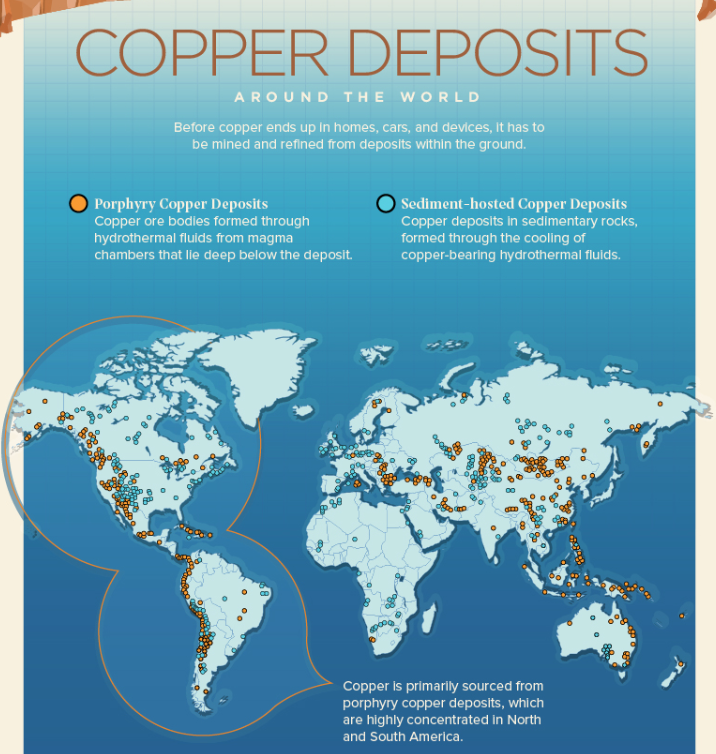Copper Deposits Around the World

Origin:
Copper is a mineral found in the Earth's crust, but its distribution is uneven globally due to specific geological conditions required for economically viable deposits.
-
Main Types of Copper Deposits:
Porphyry Copper Deposits:
-
Formed by hydrothermal fluids from magma chambers.
-
Largest source of global copper production.
-
-
Sediment-hosted Copper Deposits:
-
Found in sedimentary rock layers.
-
Formed by the cooling of copper-bearing hydrothermal fluids.
-
-
Copper Ores:
-
Most copper ores contain only a small percentage of copper; the rest is gangue (uneconomic material).
-
Two main ore types:
Copper Oxide Ores
-
Copper Sulfide Ores
-
Key Mineral:
-
Chalcopyrite (a sulfide ore) is the most common copper source, contributing to about 50% of global production.
-
-
Economic Importance:
-
Sulfide ores are more profitable due to:
-
Higher copper content
-
Easier separation from gangue
-
-
Oxide ores are more abundant but generally less economic.
Copper Mining Challenges in Chile and Peru
-
Chile is among the world's richest sources of copper, but ore quality is declining due to overexploitation.
-
The Nazca and South American tectonic plates intersect beneath Chile and Peru, creating high seismic activity.
-
A study estimates a greater than 85% chance of a major earthquake in the next 50 years in this region.
-
Implications:
-
Earthquakes pose a significant risk to mining infrastructure and operations.
-
Falling ore grades and tectonic threats may lead to rising production costs.
-
New copper discoveries are becoming increasingly valuable due to these constraints.
-
